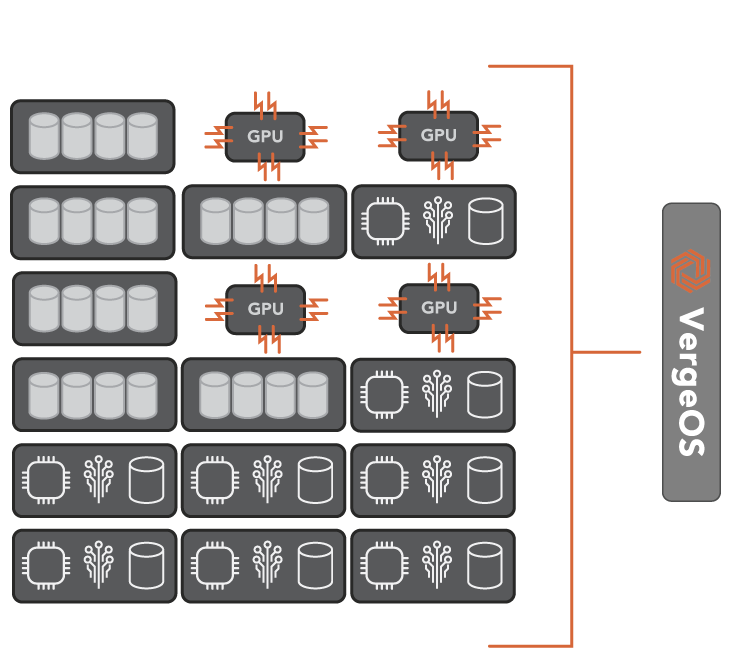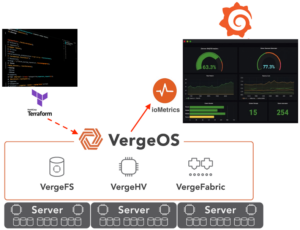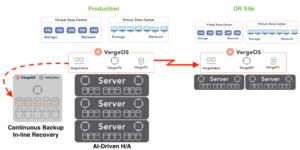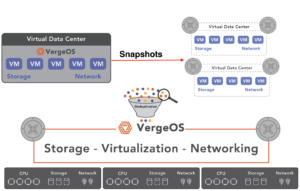
Customers using hyperconverged infrastructures (HCI) are starting to deal with aging installations and are looking for a fast ROI on HCI refreshes. Vendors like Nutanix and VMware, with vSAN, are instituting dramatic increases in renewal prices. They also overemphasize the cloud and only focus on their largest customers. With infrastructure costs rising, customers are looking for an exit strategy that will lower upfront and long-term costs.
At the same time, there is a general frustration with the broken promises of the first wave of HCI. While it simplifies infrastructure, it does not come close to the goal of a private cloud. IT planners are looking for a solution that will lower operational costs, provide self-service IT, improve availability, and better protect against threats like ransomware. FAST ROI on HCI refreshes requires these capabilities and lower upfront and long-term costs.
The Cost to Save
The problem with HCI refreshes is that alternative solutions almost always require a substantial new investment in hardware. That new hardware either comes as a bundle with their software or new hardware with restrictive and expensive specifications. The only way you start to see a return on your investment is after those savings cover the cost of the new hardware. You must go into the negative before seeing a positive return on investment (ROI).
The reason for the new hardware requirement is the alternative HCI software is as inefficient as the old HCI software, and both require more processing power, memory, and storage performance than they should. The vendor is compensating for their inefficient code by making you spend extra on hardware.
Another reason for the new hardware requirement is the lack of compatibility or supportability of the existing hardware. Forcing customers into new hardware indicates that the developers did not properly abstract the software from the underlying hardware. Their code is too dependent on specific types of hardware.
Fast HCI ROI Requires Repurposing Hardware
Ultraconverged Infrastructure (UCI) rotates the traditional three-tier data center architecture (virtualization, networking, and storage) into a single, linear software plane. VergeOS is a UCI solution that is so efficient that it can deliver better performance and workload density using the same physical hardware you have right now. As a result, your ROI starts working the day you install the software. There is no hardware acquisition cost to overcome. To learn more about how UCI read our article “Move Beyond HCI to UCI.”
Fast HCI ROI Requires Mixed Nodes
Suppose you need to add more nodes because the old system was at its performance or capacity limits. In that case, you can still leverage the existing nodes for other tasks, dramatically lowering additional spend. For example, add a set of nodes with more processing power if you need more processing. Suppose you need more IO performance; add a set of nodes with high-performance NVMe flash, or add a set of nodes with 20TB hard drives if you need more capacity. Make your current hardware work as hard as possible for as long as possible. The infrastructure software should enable you to add the minimal amount of hardware you need for its exact purpose while repurposing the existing hardware for everything else.

VergeOS UCI can support mixed nodes, whereas most HCI solutions force you to create a separate infrastructure by node type. Mixed node support means you can complement the current hardware investment instead of replacing it. As new technology comes to market, you can add it, mixing it with older technology, ensuring that your infrastructure will run for decades instead of four to five years. UCI delivers not only fast ROI but also delivers long-lasting ROI.
Fast HCI ROI requires Global Inline Deduplication
One of the most expensive components of HCI is storage. While some HCI solutions have added deduplication, most can’t perform global inline deduplication. As a result, the feature often compromises performance, forcing customers to only use it on the flash tier or to buy more powerful processors and larger quantities of RAM. Again, these additional costs make it difficult to get fast ROI on HCI refreshes. The reason for this overhead is most HCI solutions add deduplication years after the initial product introduction. It is bolt-on and not part of the core code.
VergeOS provides global inline deduplication built into the core of the software. Its integration means the algorithm is highly efficient and has little impact on performance. Customers can deploy it without having to use high-performance drives or high-performance CPUs.
Fast HCI ROI requires More Than Data Protection
Since fast ROI on HCI refreshes counts on using older hardware, it also requires integrated data protection. Because of flat or even shrinking IT budgets, many organizations are looking to use hardware until it breaks or is not economical to repair. Because older hardware tends to fail more often than newer hardware, uninterrupted access to applications and data is critical. Backups are not enough—the time it takes to recover from even the best backup software solution is no longer acceptable.
VergeOS provides a rapid return to operations by moving an application from one node to another. It provides detailed telemetry information to help you proactively predict node failure. In these cases, you can move workloads to other nodes in the cluster with zero service interruption. If a node fails unexpectedly, instantiating the workloads on another node can happen quickly and automatically.
VergeOS also provides complete protection from drive failure and unlimited, immutable snapshots. You can retain snapshots for years and mount them instantly for rapid recovery. Combined with dual-factor authentication VergeOS provides ransomware resiliency. VergeIO’s replication capabilities leverage our global inline deduplication for WAN-efficient transfers. For example, if you are replicating several remote sites or hundreds of Edge locations, any data redundancy across those sites is only transferred once. The result is remote locations are fully protected faster, and less money is spent on WAN bandwidth.
Fast HCI ROI Requires UCI
Using UCI to get a fast ROI on HCI refreshes doesn’t mean starting over, and it is not a multi-month-long conversion project. Many of our customers start by removing a few nodes in their existing infrastructure and transferring virtual machines over to VergeOS. Migration is automatic, quick, and easy. These customers see improved performance and greater storage efficiencies. Then as they see the power and simplicity of VergeOS, they start migrating more workloads and transferring more nodes into our environment. With each transfer, costs go down, and operations become more effortless.
Other customers will buy two or three new nodes to host the VergeIO environment and start creating new workloads on it. Then gradually, they will start migrating other workloads and eventually migrate in the nodes from the old HCI cluster. Again, leveraging a diverse mix of nodes is vital to the process. Other customers will start using VergeOS as a disaster recovery target for their existing environment, lowering DR costs immediately and transitioning as it makes sense.
Next Steps
- Demo – See a demonstration of a Hyper-V migration by our SE Director Aaron Reid.
- Watch – A Replay of our One-Slide Webinar, “Comparing HCI Solutions,” where Aaron and I compare HCI to Nutanix and VMware vSAN.
- Subscribe – to our HCI comparisons research notes, delivered to your inbox every two weeks.
- Schedule a 20-minute technical whiteboard session to see how VergeOS can solve your infrastructure problems.


